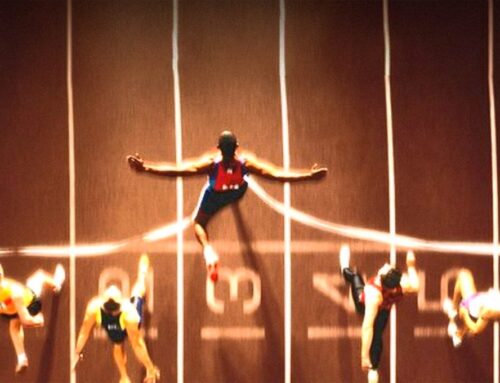Training vs. Trying
May 29, 2016
Categories: Discipline
This post is Part 1 in a 3-part blog series on discipline.
I heard a great sermon the other day about the importance of discipline. One of the most interesting points the pastor made was the difference between training and trying.
Trying is what most of us do when we want to make a change in our life. We apply a bit of effort and energy in that area of our life, and we hope for the best. Unfortunately, just trying to change something doesn’t usually result in sustained change. We might try for a while, but then inevitably something happens to derail our change effort. We might get bored, tired, or stressed out, and we lose the momentum for our change effort. We might even end up in a worse place than when we started.
Training is something different. Training is what athletes do when they are preparing for an event. I think there are three key components that differentiate training from trying:
- Training has a plan. When I ran cross-country, my coach would meet with each of us individually to plan our training. He had been an elite endurance athlete himself, and he had a doctoral degree in kinesiology. He knew how the body responded to various types of exercise, and he had a personalized plan for each of us so that we could reach our potential. Training isn’t done in a haphazard manner. Training has a plan.
- Training is consistent. When I train for something, I do it every day. When I have trained for a CrossFit competition, for example, I schedule each of my workouts days in advance. I even schedule my rest days. Training involves consistent effort over a long time period.
- Training is a priority. When I am training for something, I make the training my top priority. If the training is really important to me, it comes first. For example, when I was training to run a marathon, I ran first thing in the morning. Otherwise, it would only happen if I got around to it, which meant it probably wouldn’t happen. People in training make it a priority.
The training principles aren’t just about sports. I believe that you can apply the training mindset to anything in your life, such as improving your work, relationships, health, and spiritual life. Here’s how the apostle Paul put it, 2000 years ago:
Do you not know that in a race all runners run, but only one gets the prize? Run in such a way as to get the prize. Everyone who competes in the games goes into strict training. They do it to get a crown that will not last, but we do it to get a crown that will last forever. Therefore I do not run like someone running aimlessly; I do not fight like a boxer beating the air. No, I strike a blow to my body and make it my slave so that after I have preached to others, I myself will not be disqualified for the prize (1 Cor 9:24-27).
I don’t want to wander around aimlessly in my life, like a boxer beating the air. I want to be the best person I can be and reach my full potential. To do that, I need a training mindset.
Discussion: What do you think about the contrast between training and trying? Think about something you are trying to change in your life. Does your change effort have a plan? Is it consistent? Is it a priority?
Related Thoughts
No Comments
Leave A Comment

Subscribe To My Newsletter
Join my mailing list to receive the latest blog posts.
Receive my e-book “The Mental Health Toolkit” for free when you subscribe.





[…] This post is Part 2 in a 3-part blog series on discipline. (If you missed the first post, you can find it here.) […]
[…] This post is Part 3 in a 3-part blog series on discipline. (If you missed the first post, you can find it here.) […]